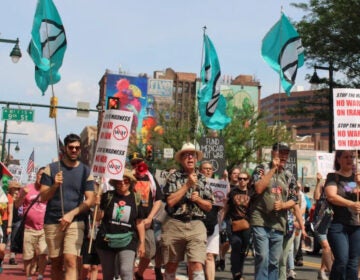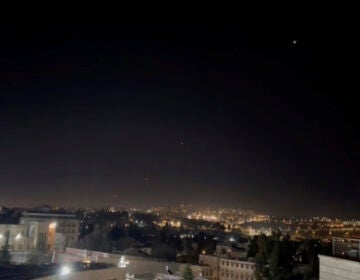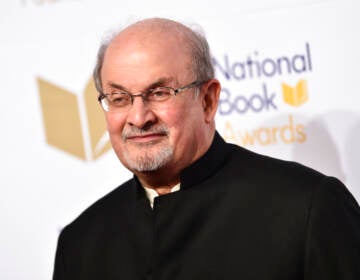Iranians in Philly area still processing ‘a big shock’ as tensions ebb
Members of the Philly region's Iranian population continue to process the killing of a military leader many of them admired, even if they oppose the Iranian government.
Listen 3:27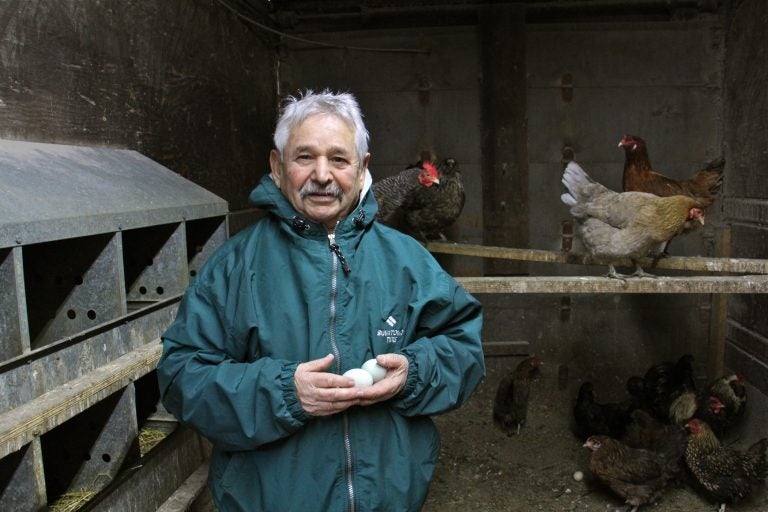
Kazem Nabavi visits the chickens he keeps behind his tire shop in Port Richmond. His animals, including a pony, two peacocks, and ducks, remind him of his childhood in Iran. (Emma Lee/WHYY)
Kazem Nabavi, owner of a tire shop in Port Richmond, mourned the death of Iranian Maj. Gen. Qassem Soleimani, a figure he admired.
“He [came] from poor family and became a general,” said Nabavi, who was born in Iran and describes himself as having pulled himself up by his bootstraps, like Soleimani. “In Iran, this is very, very, very hard. You have to be son of somebody to become somebody, but he did it. He broke that barrier.”
Fredoun Rashidian, the Iranian-born owner of a Persian restaurant in Lafayette Hill, tried to make sense of Soleimani’s killing.
“It was shock to me, a big shock,” Rashidian said of the news. “My hand was at the top of my head. Why this happen?”
But that’s where the political similarities between Nabavi and Rashidian end.
According to the latest American Community Survey data, 2013-2017, there were about 500 Iranian Americans in Philadelphia County. Nabavi and Rashidian show just how much views on U.S.-Iran relations can vary in the community.
In the 1950s, Nabavi left Iran for Hong Kong when he was 13 because he thought Shah Reza Pahlavi’s government was too oppressive.
“I was a free person and if they don’t like it, maybe they kill me,” he explained. But he thinks the country is worse off under Ayatollah Ali Khamenei, Iran’s current supreme leader.
Nabavi says he only had $13 in his pocket when he arrived to Philadelphia in 1959, but he got to work right away. He went to school, opened a tire shop business in Port Richmond and raised two children who became a lawyer and a doctor.
“This is beautiful and I don’t give it to nothing. It’s my country and I love it,” he said of the U.S. “I love Philadelphia. I love Port Richmond.”
Rashidian came to America to study during the Iranian Revolution in 1979. He stayed because, by the time he graduated in the 1980s, war had broken out between Iran and Iraq.
Though Rashidian isn’t thrilled with how the current Iranian government is working for its people, he loves Ayatollah Khamenei — he compared it to the way Catholics love the pope. Khamenei is part of why Rashidian admired Soleimani.
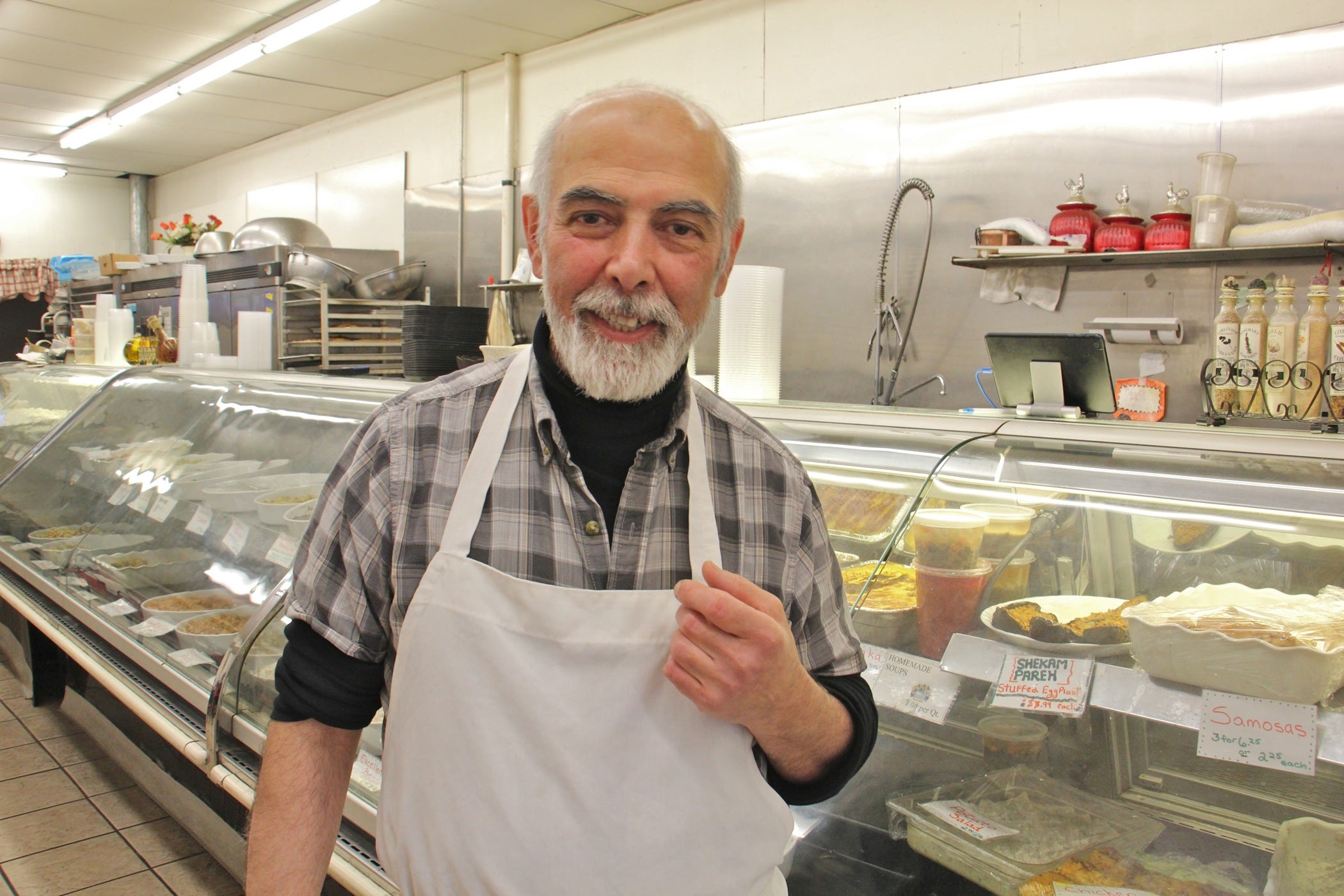
“We know [Soleimani] and we see many, many different pictures of him when our leader Ayatollah Khamenei hold him, kiss him,” said Rashidian. “We see how nice this is that our leader is always hold [Soleimani] and kiss him. Always when [Khamenei] was talking to [Soleimani] his face was happy.”
A different Soleimani outside Iran
Still, both men are quick to admit they don’t know much about the accusations against the general who went from “nothing” to Iranian national hero.
Soleimani was the leader of the Quds Force, an elite unit of the Islamic Revolutionary Guard Corps, and a terrorist organization, according to the United States government.
The U.S. Department of Defense said the Quds Force was responsible for the deaths of hundreds of American and coalition service members.
The defense department also accused the general of “developing plans to attack American diplomats and service members in Iraq and throughout the region,” in a statement.
“Even those people in Iran who are vehemently opposed to the system of government, they would not be directing their frustration or anger against Soleimani in particular,” said John Ghazvinian, interim director of the Middle East Center at the University of Pennsylvania.
Ghazvinian is the Iranian American author of “America and Iran: A Passionate Embrace, from 1720 to the Present, ” due to come out in September.
“[Soleimani] is someone who is most known for his heroism in Lebanon, in Syria and in Yemen,” Ghazvinian explained.
‘We are used to it’
Rashidian’s initial shock over Soleimani’s death wore off quickly. After all, he said, relations have been tense for decades.
“We are used to it because the policy of the United States never changes,” he said.
Rashidian pointed to how the U.S. shot down Iran Air Flight 655 in 1988 toward the end of the Iran-Iraq war, killing 290 people. The U.S. said it thought the flight was a fighter jet.
“It’s not something new,” said Rashidian. “[The U.S.] kills many, many people in Iran.”
Nabavi couldn’t help but ask himself, “[The U.S.] didn’t think about the consequences?”
Since U.S. missiles killed Soleimani while he visited Baghdad, Iraq has threatened to expel all American troops from its country, and Iran ordered missile strikes on U.S. air bases where no one was killed.
Tensions appeared to ebb again Wednesday as President Trump announced there would be no further military action against Iran.
Nabavi, a self-described pacifist who hates the thought of seeing any living creature hurt, is closely watching how U.S.-Iran relations unfold from Port Richmond.
There are too many financial interests in Iran — including oil — for a war to break out, said Nabavi. Though he does regret how people have already died amid increasing tensions between the U.S. and his home country.
Both Navabi and Rashidian have families living in Iran. They say they aren’t more concerned about their families’ safety than usual.
Rashidian, who plans a vacation to Iran in the next couple of weeks, said he was more worried about Iranians in the U.S.
“Especially since Trump is president,” he said.
Ghazvinian said it’s been his experience that Iranians in the Philadelphia region are largely opposed to the Islamic Republic in one way or another, but feel caught between two extremes.
“The day-to-day frustrations and difficulties of being caught between these two countries is very, very difficult for a lot of people, especially with things like the travel ban and the sanctions,” he said.
This week’s tensions have caused some Iranian-Americans to drop travel plans after reports of additional screenings at the airport.
Ghazvinian was questioned at John F. Kennedy airport himself last Sunday. He said he feels lucky because his questioning only lasted a few minutes.
“I don’t think I was particularly mistreated,” he said. “I think Iranians on green cards or student visas are having a much, much more difficult time at the moment, from everything I’ve been hearing.”
Just this weekend, up to 200 Iranian Americans were questioned at the Washington state border—many for several hours.
WHYY is your source for fact-based, in-depth journalism and information. As a nonprofit organization, we rely on financial support from readers like you. Please give today.


